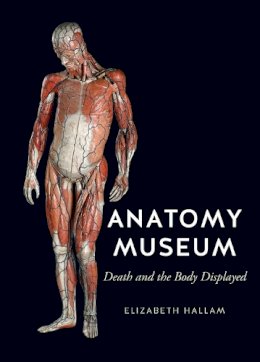
Anatomy Museum: Death and the Body Displayed
Elizabeth Hallam
Anatomy museums contain some of the most compelling and challenging displays of the human body. This innovative book focusing on one such museum – in Scotland’s northeast – opens up a wide-ranging history of deceased bodies on display, from medieval relics, to nineteenth-century mega-collections of human remains, to the controversial Body Worlds exhibition that is touring the globe. A surprisingly varied and ever-changing material and visual culture of human anatomy emerges through this history, shaped by multiple factors, including colonialism and war, as well as shifts in medical institutions, technologies and media.
Within its massive granite architecture, the Anatomy Museum of Aberdeen’s medical school has grown and transformed over the last two centuries, in relation to a network of diverse yet interconnected exhibition sites. Many such medical museums in Britain have been used for professional training in which bodies after death are treated as vital sources of knowledge about the living. Anatomists and their associates have preserved the dead and designed exhibits to expose the body’s internal composition and workings – using models, drawings, photographs, X-rays, films and flesh itself. Fascinating yet sometimes disturbing, anatomical displays, made with an array of techniques in substances such as wax, plaster and plastics, have enabled students to examine and understand bodies inside and out.
Strikingly illustrated, Elizabeth Hallam’s book investigates the social relationships and cultural practices that render deceased bodies visible and tangible in spaces of anatomical exploration and beyond.
Product Details
About Elizabeth Hallam
Reviews for Anatomy Museum: Death and the Body Displayed
Nature
Keenly aware of the broader context and making liberal use of other collections in the UK, Hallam shows us how dynamic and diverse a successful collection like this was . . . She guides us beyond the museum to other anatomy spaces, especially the lecture theatre and the dissection room . . . Anatomy Museum is well worth reading. It is impeccably researched, nicely produced and lavishly illustrated. It spurs us to think differently about collections of all kinds, and relationships between the things in them. . . . From papier-mâché to plastic, from plastinates to plasticine, there is beauty to be found in the anatomy museum.
Museums Journal
For the reviewer, a fan of the history of science in general, particularly the study of anatomy and physiology, it is difficult not to be effusive about this volume . . . This book will be a valuable addition to collections that serve practitioners and historians of the study and treatment of the human body. Recommended.
Choice
